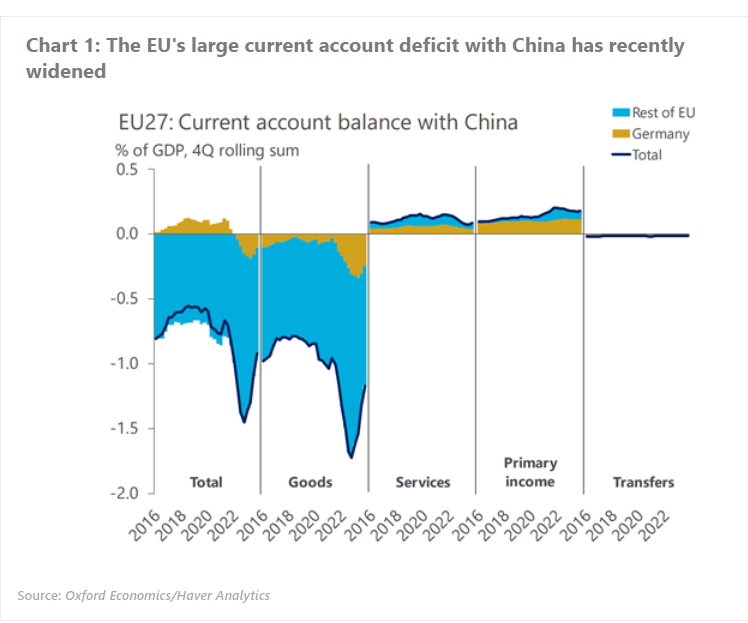Europe-China interdependence will evolve but remain
We think the EU-China economic relationship will experience more friction in the future due to structural changes to China’s economy, EU fears about Chinese goods imports undercutting European industry, and national security concerns. However, the EU and China will continue to display high levels of interdependence, providing a strong incentive to avoid major disruptions.
What you will learn:
- The EU and China have developed an asymmetric relationship with China’s trade surpluses recycled through portfolio investments in the EU. However, China’s successful domestication of value chains, technological upgrading, and supply-side stimulus measures have widened the EU’s trade deficit. As a result, EU concerns about the level playing field are becoming more central.
- The EU will seek to avoid a China shock through targeted tariffs on specific Chinese product groups, giving Chinese companies an incentive to produce in Europe.
- The deterioration in the EU’s trade balance with China had also been driven by adverse terms of trade developments. However, the unwinding of global supply bottlenecks, China’s excess capacity, and a weak renminbi will weigh on the cost European goods imports.
- As a flip side to China’s trade surpluses, it has become a large a net creditor versus the EU as the EU’s direct investments in China appear to have peaked, while China’s holdings of member states’ debt have proven remarkably stable even in the wake of quantitative easing.

Tags:
Related Posts


Post
Opportunities in Singapore could mitigate hit from US trade barriers
The slew of tariff proposals coming out of the US has added much uncertainty to the highly export-reliant Singapore economy. Given its status as a major shipping hub, potential gains from trade rerouting will probably offset some of the negative impacts of increased tariffs. The upshot is that although Singapore's prospects are dimmed, they remain relatively promising.
Find Out More
Post
What does a Fractured World look like?
We previously identified four core megatrends – demographics, technology, institutions, and globalisation – as the key drivers shaping the long-term outlook.
Find Out More